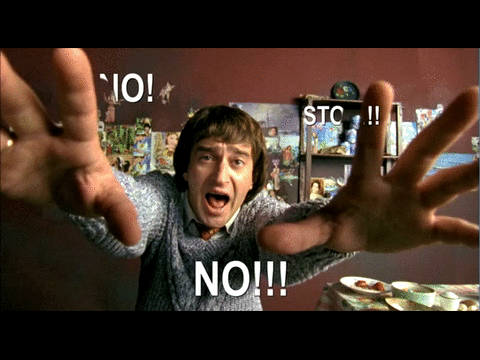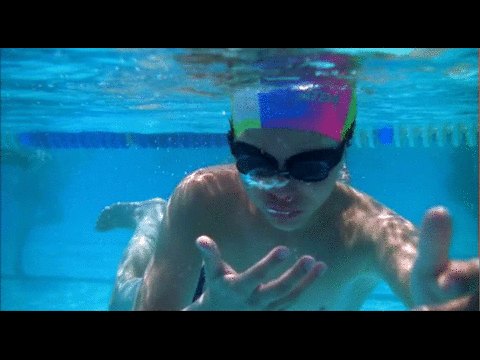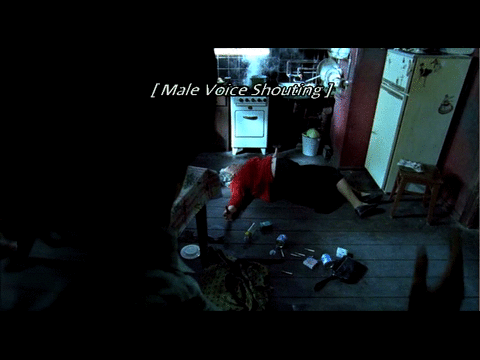Written by Tera Bruinsma
Subtitles. Captions. Those little lines of text down on the bottom of your screen that some folks swear by and others eye roll at.
For me, the necessity of subtitles is relatively new. I had chronic ear issues when I was younger, and they ultimately peaked in the form of a burst eardrum when I contracted COVID in 2020
Fortunately, by then streaming sites had popularized captions and subtitles, and I could understand why they are totally essential. Yet, I often hear complaints: "Subtitles are distracting." "I don't want to read a movie." Even I used to say that before losing more than half my hearing.
Which leads us to the real question: are subtitles actually the problem, or are they upending our expectations of how movies "should" be viewed?
Subtitles as Accessibility (Not a Question of Choice)
Subtitles and captions aren't optional extras for convenience's sake; for d/Deaf and hard-of-hearing audiences, they are a requirement. Captions are more than subtitles because they also carry contextual information: music, ambient noise, even off-screen action. Consider a suspense sequence where the music is incremented gradually and then is suddenly cut out by an off-screen crash of shattering glass. A hearing audience felt that tension and release on an emotional level. Captions allow viewers who do not hear those hints to sense the same story rhythm.
The need carries over to others: subtitles assist ESL students with language, support neurodivergent viewers with alternative information processing, and benefit all viewers in noisy environments. It is no coincidence that viewing statistics show that subtitle use increased in all demographics for the last ten years.
Most importantly, subtitles extend the audience of cinema itself, making it possible for individuals to experience film across linguistic and cultural boundaries.
Language, Culture, and Authenticity
“Once you overcome the one-inch-tall barrier of subtitles, you will be introduced to so many more amazing films.”
Hollywood's grip on global cinema has kept Western viewers hostage to expectation for years. Foreign movies were relegated to art-house or niche fare for decades, with English-language product reigning supreme over distribution channels. Subtitles were instructed to be a kind of intellectual hurdle, a marker of "serious" or "difficult" film, rather than simply another mode of entry.
Streaming has transformed this dynamic. Netflix, MUBI, and Criterion have brought international film within reach in ways previously unimaginable. Korean dramas, Japanese anime, Spanish thrillers, and Scandinavian noir series not only appear before worldwide audiences but often become mainstream blockbusters.
Instead of a pipeline of Hollywood material, audiences are now immersed in stories arising from other histories, aesthetics, and cultural values. Subtitles are the vehicle that enables this global exchange of film. They are not barriers to immersion; they are pathways to new forms of it. Although some would argue that international cinema can just be dubbed for English audiences, I would argue that subtitles are superior film translators.
Dubbing vs Subtitles
One of the most important advantages of subtitles is that they maintain the authenticity of film speech. Subtitles allow us to hear the original performance. The tone, rhythm, and emotional accent of the actor are conveyed, even if we don't understand the language itself.
Dubbing, in contrast, poses several challenges. Because dubbing must be synchronized with lip movements, translations are reduced, cut short, or altered for the available screen space. The subtlety of word choice, idioms, and cultural reference may be lost along the way. In addition, dubbing can smother the emotional purpose of the original performance: the anger in a sharp consonant, the grief in a whispered line, or the irony of a deliberately flat tone.
There are also practical issues. Dubbed versions tend to employ a small group of voice actors for a variety of characters, and it becomes difficult for viewers to keep track of which character is speaking. These limitations create a double erasure: both the linguistic authenticity and the performing presence of the original actors are destroyed.
Subtitles, however, allow us to watch a film in the way that the makers intended, maintaining its artistic and cultural integrity, while even sometimes enhancing it.
Creative Subtitling
Along with being accessible and authentic, subtitles could be creative, innovative, and visually expressive.
Night Watch / Day Watch (2004/2006) – Director Timur Bekmambetov, a Russian Horror filmmaker, utilized animated subtitles that ripple, dissolve, or fracture to the rhythm of the action, increasing tension while remaining legible and following accessibility guidelines.
Trainspotting (1996) – Danny Boyle aestheticized subtitles to clarify dense Scottish brogue, making them a creative option, even for English speaking (and hearing) viewers.
Pachinko (2022) – Languages are separated with color-coded subtitles: blue for Japanese, yellow for Korean. This subtle decision gives both cultural and narrative context to the characters’ dialogue.
John Wick (2014) – Large and colourful fonts turn subtitles into a component of the films fight sequences and composition, highlighting the dynamism of the action.
Transformers (2007) – Alien dialogue is first subtitled in the alien’s written language before it flips into English, creating even more world-building.
Subtitles can be part of the stylization of a movie and should be a component that is considered just as much as the editing, sound design, or dialogue. If they are applied thoughtfully, they can add to the aesthetic potential of cinema itself.
The Future of Subtitles
Cinema is always subject to technological and cultural shifts: from silent to talkies, from black-and-white to colour, from film reels to streaming. Subtitles are part of this natural technological progression. They are not distractions but emerging forms of cinematic inclusion that facilitate greater access, while also preserving authenticity, and allowing all audiences to connect with the material.
So, the next time you find yourself annoyed at subtitles, ask yourself: do you hate them? Or have you just not yet discovered how they open up what film can be?
And if you are a filmmaker reading this, try your hardest not to think of subtitles as an afterthought, but as an opportunity. Subtitles can be integrated into the very texture of your film through design, location, and aesthetics, in ways that enhance the experience for all audiences. Rather than thinking of them as something you need to do, think of them as another creative tool, one that can be used to enhance immersion, increase access, and more fully tell your story.







